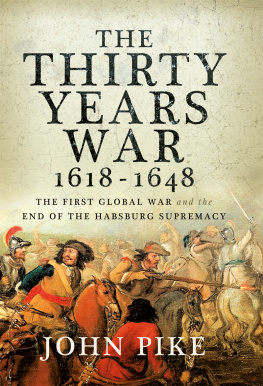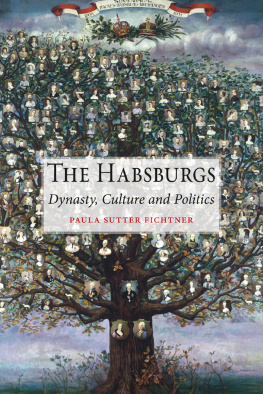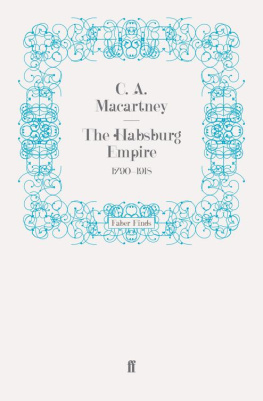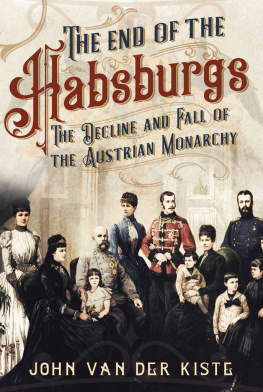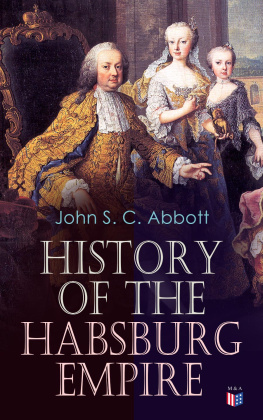D YNASTY AND P IETY
Winner of the Filips van Marnix van Sint-Aldegonde Prize 2011
The youngest son of Emperor Maximilian II, and nephew of Philip II of Spain, Archduke Albert (15591621) was originally destined for the church. However, dynastic imperatives decided otherwise and in 1598, upon his marriage to Philips daughter, the Infanta Isabella Clara Eugenia, he found himself ruler of the Habsburg Netherlands, one of the most dynamic yet politically unstable territories in early-modern Europe.
Through an investigation of Alberts reign, this book offers a new and fuller understanding of international events of the time, and the Habsburg role in them. Drawing on a wide range of archival and visual material, the resulting study of Habsburg political culture demonstrates the large degree of autonomy enjoyed by the archducal regime, which allowed Albert and his entourage to exert a decisive influence on several crucial events: preparing the ground for the Anglo-Spanish peace of 1604 by the immediate recognition of King James, clearing the way for the Twelve Years Truce by conditionally accepting the independence of the United Provinces, reasserting Habsburg influence in the Rhineland by the armed intervention of 1614 and devising the terms of the Oate Treaty of 1617. In doing so the book shows how they sought to initiate a realistic policy of consolidation benefiting the Spanish Monarchy and the House of Habsburg.
Whilst previous work on the subject has tended to concentrate on either the relationship between Spain and the Netherlands or between Spain and the Empire, this book offers a far deeper and much more nuanced insight in how the House of Habsburg functioned as a dynasty during these critical years of increasing religious tensions. Based on extensive research in the archives left by the archducal regime and its diplomatic partners or rivals, it bridges the gap between the reigns of Philip II and Philip IV and puts research into the period onto a fascinating new basis.
Luc Duerloo is professor of early modern political history at the University of Antwerp, Belgium. He has published on the Habsburgs, the politics of piety and the Belgian nobility.
This figure has intentionally been removed for copyright reasons. To view this image, please refer to the printed version of this book
1 Frans II Pourbus, Portrait of Archduke Albert, 1599. Albert is cast as sovereign and military commander. Madrid, Patrimonio nacional, Monasterio de las Descalzas reales.
Dynasty and Piety
Archduke Albert (1598-1621) and Habsburg Political Culture in an Age of Religious Wars
Luc Duerloo
First published 2012 by Ashgate Publishing
Published 2016 by Routledge
2 Park Square, Milton Park, Abingdon, Oxon OX14 4RN
711 Third Avenue, New York, NY 10017, USA
Routledge is an imprint of the Taylor & Francis Group, an informa business
Copyright Luc Duerloo 2012
Luc Duerloo has asserted his right under the Copyright, Designs and Patents Act, 1988, to be identified as the author of this work.
All rights reserved. No part of this book may be reprinted or reproduced or utilised in any form or by any electronic, mechanical, or other means, now known or hereafter invented, including photocopying and recording, or in any information storage or retrieval system, without permission in writing from the publishers.
Notice:
Product or corporate names may be trademarks or registered trademarks, and are used only for identification and explanation without intent to infringe.
British Library Cataloguing in Publication Data
Duerloo, L.
Dynasty and piety : Archduke Albert (1598-1621) and Habsburg political culture in an age of religious wars.
1. Albrecht VII, Archduke of Austria, 1559-1621. 2. Habsburg, House of. 3. Europe--Politics and government--1517-1648. 4. Europe--History, Military--1492-1648. 5. Europe--History, Military--1648-1789.
I. Title
940.2'32'092-dc23
Library of Congress Cataloging-in-Publication Data
Duerloo, L.
Dynasty and piety : Archduke Albert (1598-1621) and Habsburg political culture in an age of religious wars / by Luc Duerloo.
p. cm.
Includes bibliographical references and index.
ISBN 978-0-7546-6904-3 (hardcover)
1. Belgium--History--1555-1648. 2. Albrecht VII, Archduke of Austria, 1559-1621. 3. Habsburg, House of. 4. Netherlands--History--Wars of Independence, 1556-1648. 5. Netherlands--History--Twelve Years Truce, 1609-1621. I. Title.
DH605.D84 2012
949.3'02092--dc23
2011037830
ISBN 9780754669043 (hbk)
ISBN 9781315578354 (ebk)
ISBN 9781317147275 (ebk-ePUB)
Contents
List of Figures
1 Frans II Pourbus, Portrait of Archduke Albert, 1599. Albert is cast as sovereign and military commander. Madrid, Patrimonio nacional, Monasterio de las Descalzas reales.
Preface
I remember exactly where this book originated. It was during one of those long conversations over gin and tonic in the salon of Bedford Gardens. Robert Oresko and I were discussing the Albrecht & Isabella exhibition, a venture that sought to present a new approach to the politics and artistic patronage of the Archducal Court and was held at the Royal Museums for Art and History in Brussels in the fall of 1998. And it was Robert who pointed out that the exhibition called for a monograph on the reign of the Archdukes. Like the exhibition, the book could break new ground by taking the court as its vantage point. It seemed a fairly straightforward project. Quite a bit of research had been done already. So I took the plunge. Little did I know that I would be writing these lines more than a decade later, let alone that Robert whose encouragement and critical reflections meant so much in the initial stages would no longer be there to read them.
The original plan was to quarry the largely neglected diplomatic records of the reign for the inside knowledge needed to understand the workings of the court. Quite soon, however, the wealth of that material and the new perspectives that it allowed on the international relations of the early seventeenth century imposed a change of course. Instead of confirming the established idea that the archducal regime operated essentially on the domestic level, I made it my brief to analyse its role in the international arena. The court receded to the background, its place being taken by the August House of Austria. Habsburg history, as I came to understand, is essentially dynastic history, the collective if at times strained enterprise of Europes leading ruling house to preserve and wherever possible extend its power, to further Tridentine Catholicism as its imperial ideology and to shield its global economic foundations from all too eager interlopers. The Habsburg system revolved round a network of courts, spread out across Europe like a constellation of stars, with the Spanish court as the brightest of them all. It was held under constant surveillance by the other key players of the day; chiefly, though not solely, the papacy and the French and English monarchies.
The historian tracing the Habsburg past needs an appetite for travel and companions who are willing to put up with a lot. For many years Tonia Dhaese encouraged me to pursue this project, allowing me to leave for research journeys abroad and spend long hours upstairs indulging in or depending on the moment toiling over yet another chapter. The pace at which the project grew into a rambling edifice did not make it easy for her. In the course of my quest our sons, Karel-Alexander and Andreas, were taken to places where children their age rarely come: the Palazzo ducale in Mantua, the Lobkovicz collections at Nelahovezes, the Villa Farnese in Caprarola or the


